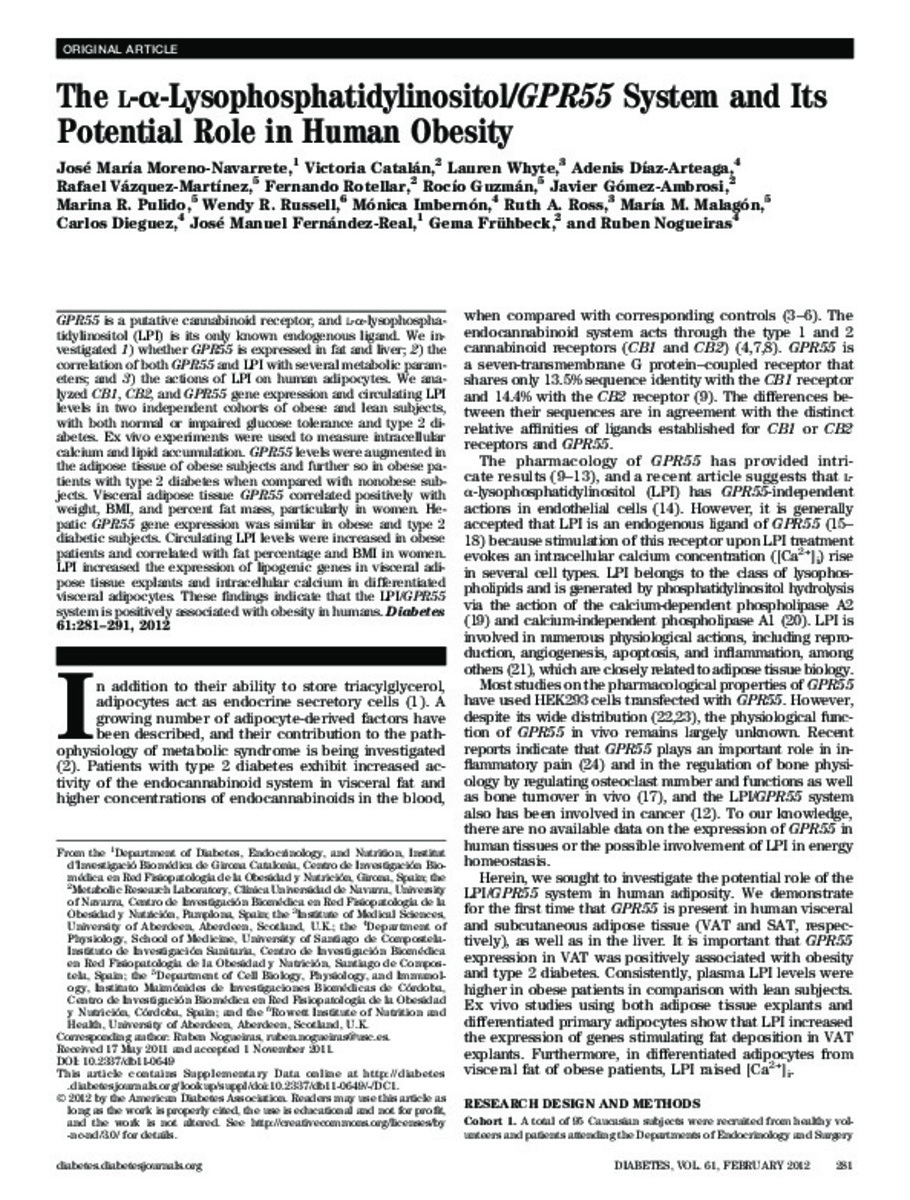Full metadata record
| DC Field | Value | Language |
|---|---|---|
| dc.creator | Moreno-Navarrete, J. (José) | - |
| dc.creator | Catalan, V. (Victoria) | - |
| dc.creator | Whyte, L. (Lauren) | - |
| dc.creator | Diaz-Arteaga, A. (Adenis) | - |
| dc.creator | Vazquez-Martinez, R. (Rafael) | - |
| dc.creator | Rotellar, F. (Fernando) | - |
| dc.creator | Guzman, R. (Rocío) | - |
| dc.creator | Gomez-Ambrosi, J. (Javier) | - |
| dc.creator | Pulido, M.R. (Marina R.) | - |
| dc.creator | Russel, W.R. (Wendy R.) | - |
| dc.creator | Imbernon, M. (Mónica) | - |
| dc.creator | Ross, R.A. (Ruth A.) | - |
| dc.creator | Malagon, M.M. (María M.) | - |
| dc.creator | Dieguez, C. (Carlos) | - |
| dc.creator | Fernandez-Real, J.M. (José Manuel) | - |
| dc.creator | Frühbeck, G. (Gema) | - |
| dc.creator | Nogueiras, R. (Rubén) | - |
| dc.date.accessioned | 2014-08-23T11:37:25Z | - |
| dc.date.available | 2014-08-23T11:37:25Z | - |
| dc.date.issued | 2012-02 | - |
| dc.identifier.citation | Moreno-Navarrete JM, Catalán V, Whyte L, Díaz-Arteaga A, Vázquez-Martínez R, Rotellar F, et al. The L-α-lysophosphatidylinositol/GPR55 system and its potential role in human obesity. Diabetes. 2012 Feb;61(2):281-291 | es_ES |
| dc.identifier.issn | 0012-1797 | - |
| dc.identifier.uri | https://hdl.handle.net/10171/36374 | - |
| dc.description.abstract | GPR55 is a putative cannabinoid receptor, and l-α-lysophosphatidylinositol (LPI) is its only known endogenous ligand. We investigated 1) whether GPR55 is expressed in fat and liver; 2) the correlation of both GPR55 and LPI with several metabolic parameters; and 3) the actions of LPI on human adipocytes. We analyzed CB1, CB2, and GPR55 gene expression and circulating LPI levels in two independent cohorts of obese and lean subjects, with both normal or impaired glucose tolerance and type 2 diabetes. Ex vivo experiments were used to measure intracellular calcium and lipid accumulation. GPR55 levels were augmented in the adipose tissue of obese subjects and further so in obese patients with type 2 diabetes when compared with nonobese subjects. Visceral adipose tissue GPR55 correlated positively with weight, BMI, and percent fat mass, particularly in women. Hepatic GPR55 gene expression was similar in obese and type 2 diabetic subjects. Circulating LPI levels were increased in obese patients and correlated with fat percentage and BMI in women. LPI increased the expression of lipogenic genes in visceral adipose tissue explants and intracellular calcium in differentiated visceral adipocytes. These findings indicate that the LPI/GPR55 system is positively associated with obesity in humans. | es_ES |
| dc.language.iso | eng | es_ES |
| dc.publisher | American Diabetes Association | es_ES |
| dc.relation | info:eu-repo/grantAgreement/EC/FP7/223713 | - |
| dc.rights | info:eu-repo/semantics/openAccess | es_ES |
| dc.subject | Obesity | es_ES |
| dc.subject | GPR55 protein, human | es_ES |
| dc.subject | Lysophospholipids | es_ES |
| dc.subject | Adipocytes | es_ES |
| dc.subject | Cell differentiation | es_ES |
| dc.title | The L-[alpha]-lysophosphatidylinositol/GPR55 system and its potential role in human obesity | es_ES |
| dc.type | info:eu-repo/semantics/article | es_ES |
| dc.identifier.doi | http://dx.doi.org/10.2337/db11-0649 | es_ES |
Files in This Item:
Statistics and impact
Items in Dadun are protected by copyright, with all rights reserved, unless otherwise indicated.






